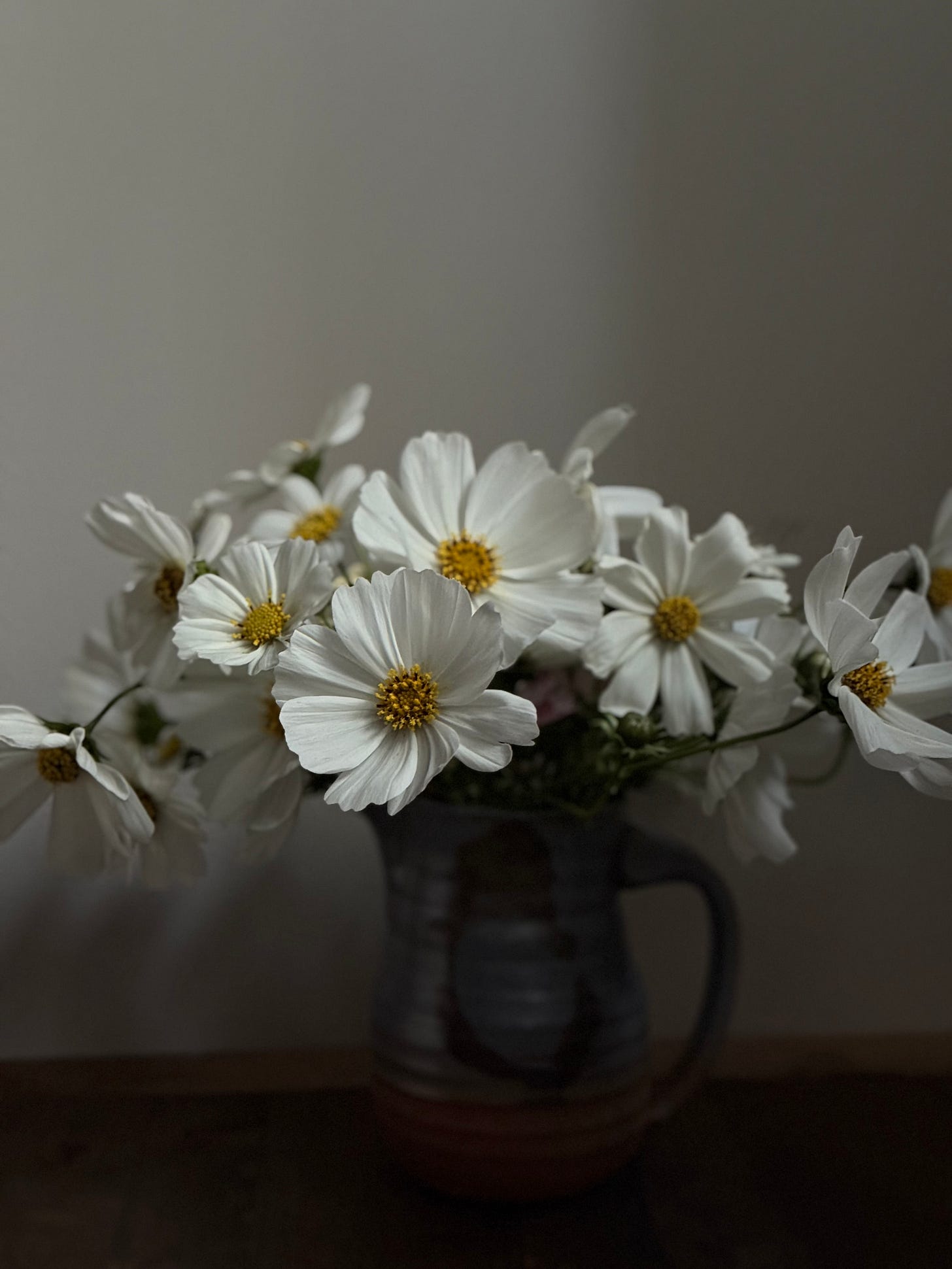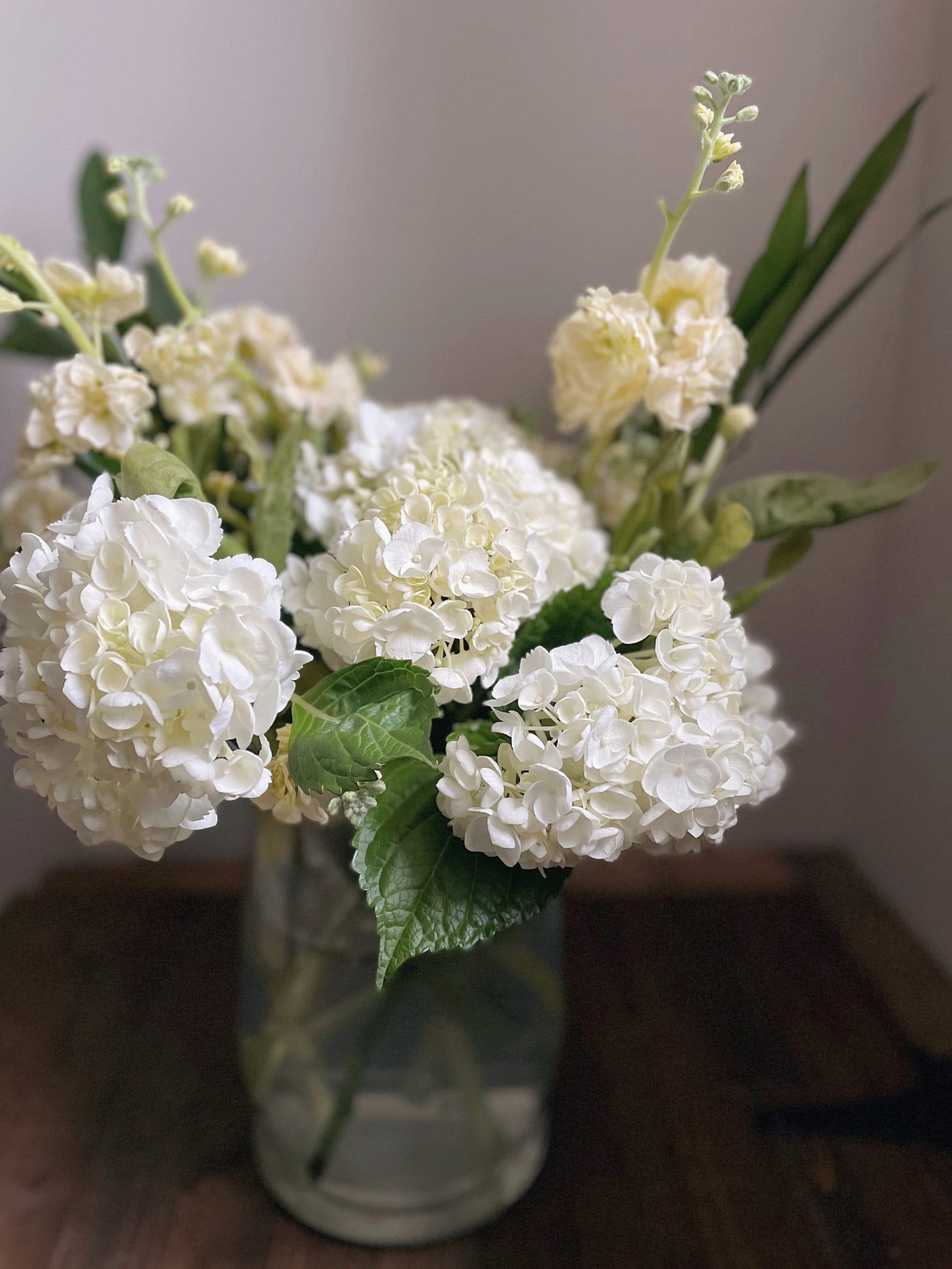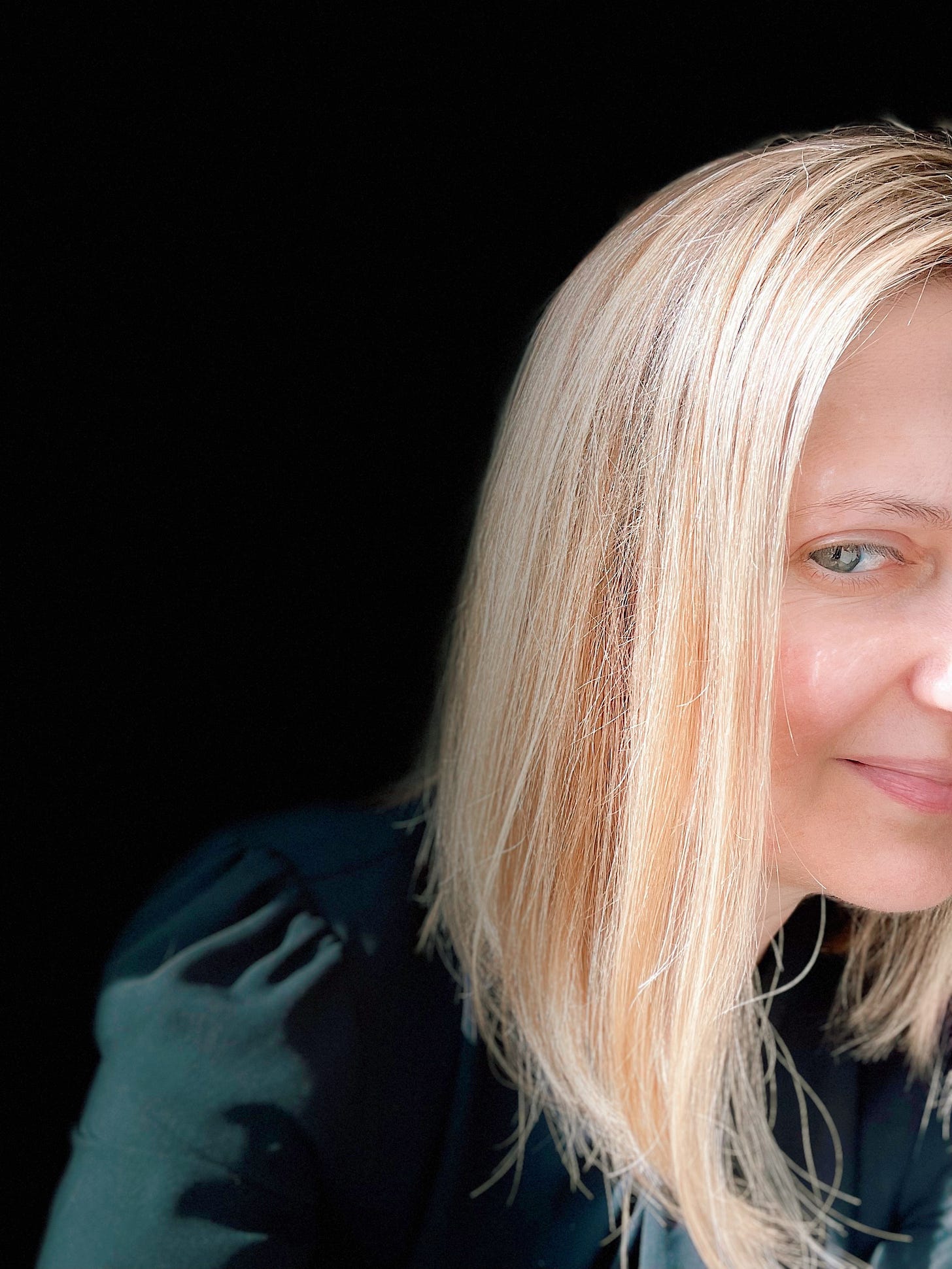Today’s essay includes archived images of white flowers, but for a good reason.
In January, my beloved friend died. M started as my teacher but soon became a kindred spirit, and we stayed in friendship together for thirty years.
When I say dear friend, I think I need to explain what I mean. She might have been everyone’s cheerleader, but her whoops and hollers always felt like they were just for me. She saw the world as big and grand and worthy of hope, so I learned to do that, too. She wore her intelligence and deep feelings like a crown, which meant I could cry just as comfortably in her presence as I could laugh.
We often shared our favorite poems with each other because as we aged, poetry fed us the same way our pursuit of dance did when were younger. I always intended to share some of my own poetry with her, but then she got sick. The severity of M’s cancer meant that her health deteriorated quickly. She was angry and sad and sometimes despondent. So was I. In those final months that passed quickly from diagnosis to hospice, all I wanted to do was speak plainly with her. No room for decorative language because metaphor stole time and required a type of concentration neither of us could muster. I stopped sharing my creative writing and shifted to only the most vital language to communicate with her. How are you feeling today? Can I come visit you? I love you very much.
But I also knew I would need help finding words for my experience of losing her. I joined an online poetry community and began working through the craft, hoping to uncover something that made sense, some perspective to recognize the grief I carried.
I wrote this piece the morning after she died:
After You are Gone
I sip hot coffee in a dark
living room at 5:30 am.
Outside, nightfall sticks
to wet pavement.
Words lay scattered
on the floor near my feet,
but I can’t figure out
how to string them together.
I wait for the sun to rise.
One of M’s tricks for enduring pain in the early winter of treatment was to imagine her white blood cells blooming like flowers. A hallmark of body-mind centering, she conjured vivid images, like white blood cells turned blossoms, to provide a layer of healing, one in which her body worked alongside traditional medical interventions, including chemotherapy. I like to think that in those dark days, when snow covered the frozen ground and managing pain became unbearable for her, she spent time cultivating a verdant inner landscape. She closed her eyes and grew a white dahlia here. A daisy there. Peonies sprouted near her forehead, and maybe a large cream-colored rose blossomed in the background near her spine. When she died, I promised to look for her in the flowers.
I wrote her obituary, spoke at her memorial service, cleaned out her office, and then placed some of her belongings on my own desk. I added white flowers to my cut flower garden, watched butterflies lilt between petal heads, thought about how much I missed her, and cried for stretches of days. Tears still come most quickly on my daily run: each stride an invitation to unwind my sadness from its tightly-coiled burrow in my muscles. I’ve lived eleven months this way.
Before her illness, we planned projects for the future: develop a workshop exploring resiliency and then curate it for public school teachers, especially arts teachers. Present our work at conferences. Write about our ideas in professional journals. Fortify our lived experiences by building a community together.
I can’t imagine continuing this work alone. I still build tiny memorials for her in my mind every day. I hear her voice. I taste peppermint tea on my tongue, the kind I sipped when we chatted over Zoom. I feel her arm, tender weight of bone wrapped in skin, from our very last time together, when I tucked her into bed and said, I’ll see you soon.
Seven months before M died, I wrote a short piece for her retirement celebration. She was tired from her first six-weeks of treatment, her face protected by a mask, but she nodded along as I read words crafted just for her. Afterward, she poured praise into me with a tender hug. Her encouragement, shared with a weary voice, solidified what I already knew: she loved me. Our friendship meant something. On days when I miss her most, I look at her handwriting. The way the tail of her “j” drops like the single wing of an infinity sign, her “a” printed just like a typewriter, still comforts me. I listen for her voice to call from fragmented notes and reflective musings she scribbled across pages of notebooks throughout her career.
When I left her long-term care facility for the last time, promising to return soon, I walked through empty hallways, irritated by noise coming from the communal kitchen. A nursing assistant cleaned and sorted silverware, each utensil clanging as he tossed it into small wooden drawers. Didn’t he know my friend was dying in the room next door? The noise was too much. My sadness was too much. The bleak day, sterile facility, cold wind, holiday lights — all of it overwhelmed me. I sobbed into the steering wheel of my car.
Before I pulled out of the parking lot, I ordered a pink poinsettia from a nearby florist, requesting it be delivered to M with this message: When the pain becomes too much, think pink, like sugar plum fairies and bubble gum from your childhood and a cotton candy sunrise at daybreak. The plant was for her, but giving it — that was for me. One last emblem of friendship, placed atop the dresser at the foot of her bed where she could see the plant’s marbled blush leaves every day.
It’s November now and my garden beds are also tucked in for winter months. The polytunnel frame sits arced above a raised bed in the kitchen garden, ready to host new plant life when overnight temperatures hover below 32 degrees Fahrenheit. I’ve prepared the basement for indoor seed starting in February. And of course, I’ve ordered more white flowers to grow next summer. It’s my way of telling M, I’ll see you soon.
In January, you’ll notice a new offering in my newsletter. In addition to a visual essay and a long-form essay, I’ll share a small collection of poems each month. And I’ll imagine wherever M is in this great big universe, like you, she’s reading these poems and smiling, telling me to keep going.
-For M.R.
Special thanks to
, author of Instructions for Traveling West, whose online writing community, Sustenance, has given me a place to process experiences while working on craft. It’s filled with wonderfully talented writers who provide support and encouragement, two things I’ve relied on since joining the community in 2023.Many writers in Sustenance have published their poetry, like Sue Ann Gleason’s recent collection, Pencil Man. Watching writers work on their poetry, some of which confront the hardest parts of life, has been especially healing this year.
Happy holidays. See you next month.
-Betsy











This is a really beautiful piece. A lot of what you wrote really resonates with me and reminds me of a few close friends that I have.
True bonds endure